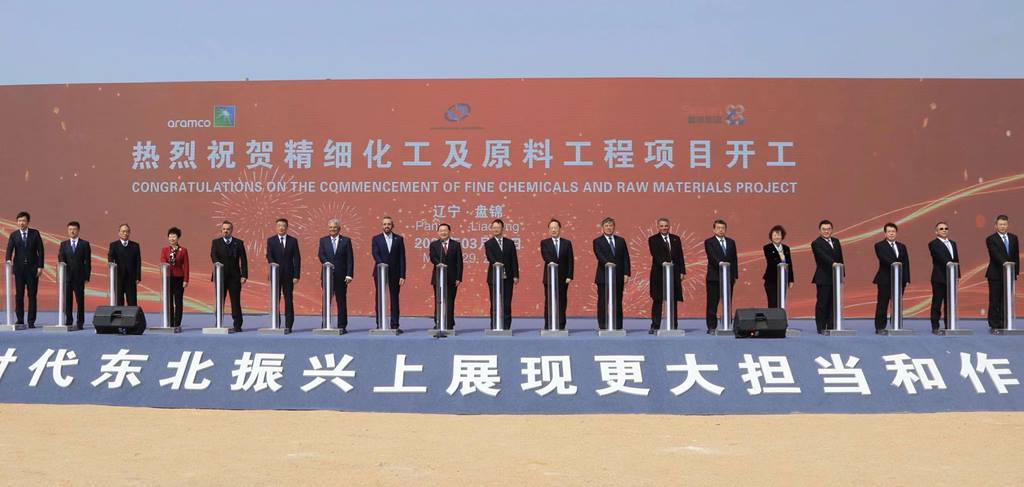Aramco JV HAPCO breaks ground on new refinery and petrochemical complex
A ground-breaking ceremony recently took place for a major integrated refinery and petrochemical complex being developed by Huajin Aramco Petrochemical Company (HAPCO). The joint venture between Aramco (30%), NORINCO Group (51%) and Panjin Xincheng Industrial Group (19%) is developing the complex in the city of Panjin, in China’s Liaoning Province.
On March 26, it was announced that the complex was expected to be fully operational by 2026. Aramco is expected to supply up to 210,000 barrels per day (bpd) of crude oil feedstock to the facility.

Among those attending the ground-breaking ceremony were Abdulrahman Alharbi, Saudi Ambassador to China; Hao Peng, Secretary of the Provincial Party Committee and Chairman of the Standing Committee of the Liaoning Provincial People’s Congress; Li Lecheng, Deputy Secretary of the Provincial Party Committee and Governor of the Liaoning Provincial Government; Liu Shiquan, Chairman of Norinco Group; Wang Bingsen, Secretary of the Panjin Municipal Party Committee; and Zou Wenchao, Vice President of Norinco Group.
Mohammed Y. Al Qahtani, Aramco Executive Vice President of Downstream, said in a speech at the event: “This complex is a cornerstone of our efforts to support a world-class, integrated Downstream sector here in China, as petrochemicals will play a vital role in our joint success. Once complete, we believe HAPCO will be a model for China’s modern petrochemicals industry moving forward, able to deliver lower carbon products, chemicals, and advanced materials.”
On March 27, Aramco also announced it had signed definitive agreements to acquire a 10% interest in Shenzhen-listed Rongsheng Petrochemical Co. Ltd. for RMB 24.6 billion ($3.6 billion at current exchange rates). Combined, the partnership with Rongsheng and the HAPCO joint venture would see Aramco supply a total of 690,000 bpd of crude to high chemical conversion assets in China, in line with its strategy of converting four million bpd of crude to chemicals by 2030.